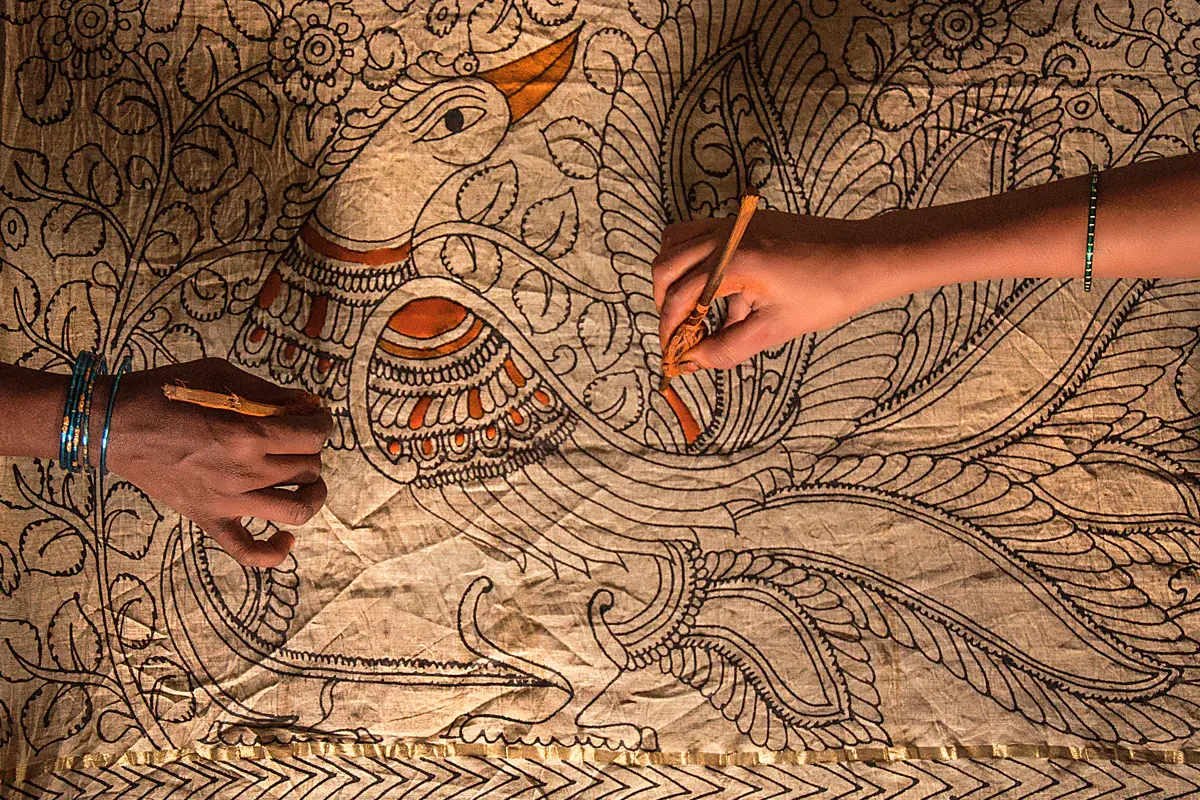Kalamkari, meaning pen work, originated in the ancient villages of Machilipatnam and Srikalahasti in Andhra Pradesh. The art dates back to over 3,000 years and flourished under Mughal and Golconda patronage.
Kalamkari is a traditional hand-painted or block-printed textile art form featuring mythological scenes, epics (Ramayana, Mahabharata), and floral designs.
The two types of Kalmkari are Srikalahasti Style: Freehand painting using a pen (kalam) to draw intricate details and Machilipatnam Style: Block-printed designs filled with natural colors.
First, the artist washes the cloth and treats it with milk and myrobalan (harad) to prepare the base. The artist then uses a fine bamboo pen dipped in natural black dye to sketch the outline. Colors are applied layer by layer, using natural pigments derived from plants and minerals. The cloth is boiled to fix the colors and remove excess dye.
The materials used are cotton or silk fabric as the base, bamboo pens for Srikalahasti style
and natural dyes (red from madder root, black from iron filings, yellow from pomegranate rind).
The artist uses freehand drawing for precision and detailing. Wax resist technique is employed for block-printing. The artist uses bright earthy tones and repeated washing to enhance color vibrancy.





